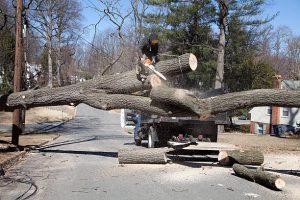1. Applying Finishes or Varnishes Too Early
After your fence is installed, it’s important to allow the fence to completely dry out before applying any new product to it. This is because the manufacturer puts moisturizing and preservation coatings on the fence that will likely interfere with anything you put over it if you do so too soon. Keeping your fence healthy for years can be enhanced by adding a clear coating to the fence if you enjoy its natural look, staining it, or painting it. If you paint it, you will have to repaint every few years.
2. Using Too Weak of Hinges
Most first time fence builders make the mistake of underestimating the size of hinge needed to hold the weight of their new fence. Furthermore, the posts and cement that anchors them will have to be done in accordance with the weight of your fence as well. This all depends on fence material, whether it was pressure-treated which causes fences to become more heavy than expected, and weather patterns like rain that cause the fence to become heavier as well. If you question these factors at all and your ability and experience level to work around them, call a professional for assistance.
3. Up-hill Fence Building
It’s very possible to fence a yard with an incline. You will, however, have to create sections that step up over the elevations properly. Your fence should be broken up into sections about 6-8 feet long and raised by one full or half foot. To insure the job is done properly, call a professional for assistance.
4. Pissing Off The Neighbors
Excuse our language, but building a fence without taking your neighbors or homeowners association into consideration is a big no-no. They say “bad fences make bad neighbors”. You don’t want to make this costly mistake. You want to enjoy your privacy without having to wonder what feelings are being had beyond the fence.
5. Too Long of Sections Without Support
Fencing sections are usually in 6 to 8 foot increments and there should be posts put at no longer than these 8 foot sections to insure that the fence is sturdy enough to withstand any pressure put on it (by animals, weather patterns, or pressure washing).
6. Lazy Posts
Concreting posts correctly, and at the recommended depth in the ground is essential for the integrity and longevity of the fence. Follow instructions and don’t cut corners here. Posts need to be put at least 2 feet under ground, but the rule of thumb is 1/3 the post’s length. Check with your local codes and city ordinances though, because they often have recommendations of their own. In the event you aren’t as cool with your neighbors as you’d like to be, having done everything to code will aid you in any disputes that could ensue.
Any or all of these mistakes combined can be costly. Be sure to check all these mistakes off your list by talking to your neighbors, checking with your city, reading directions, and calling a professional at any times of self-doubt.





